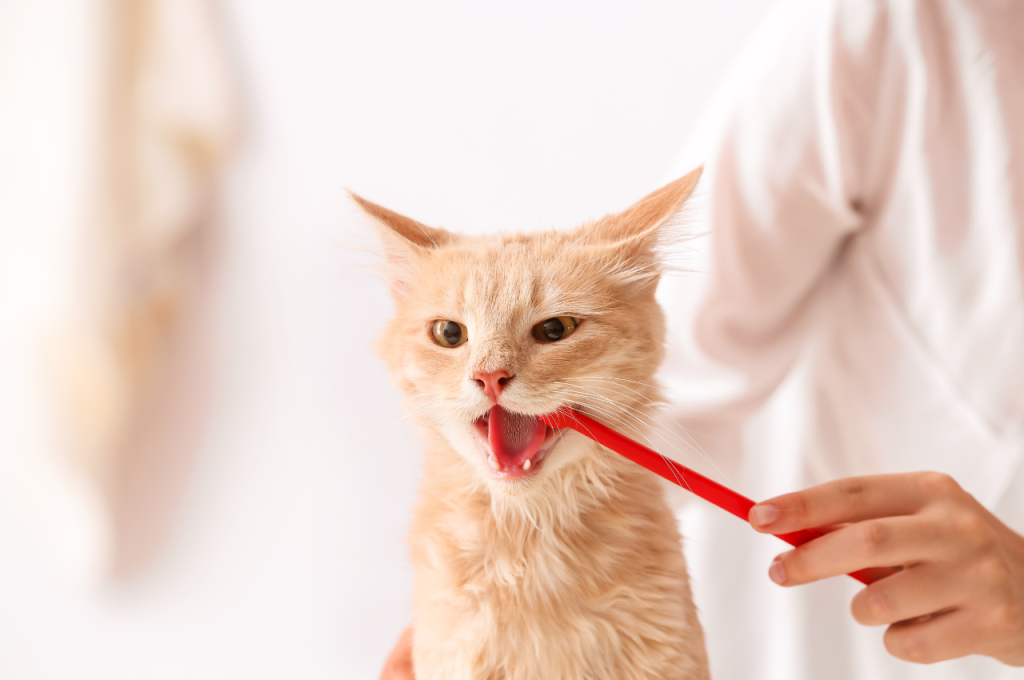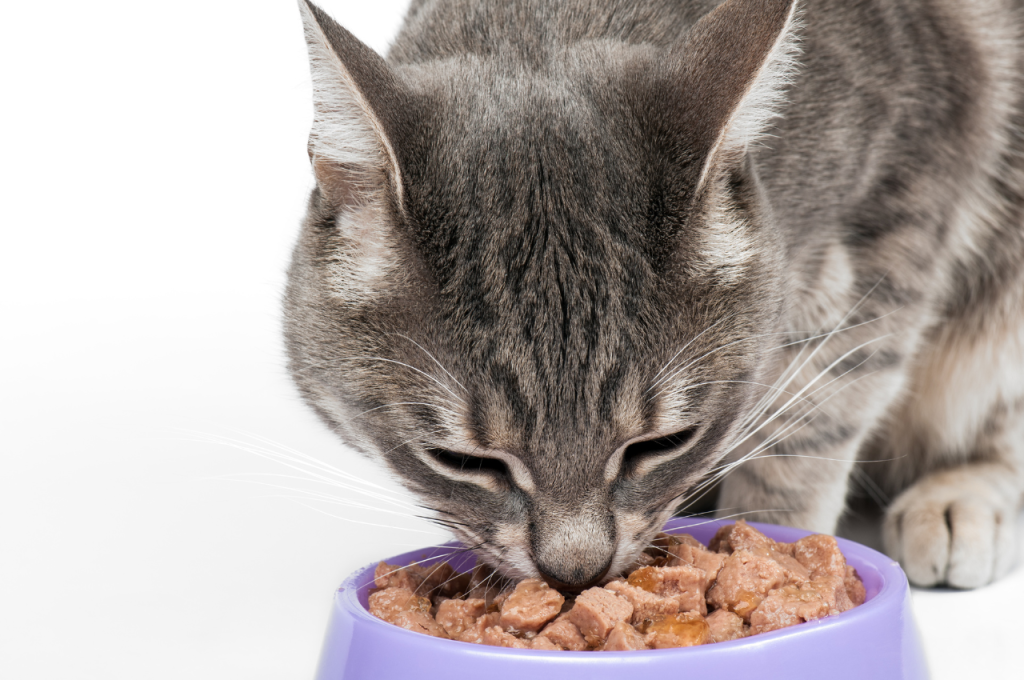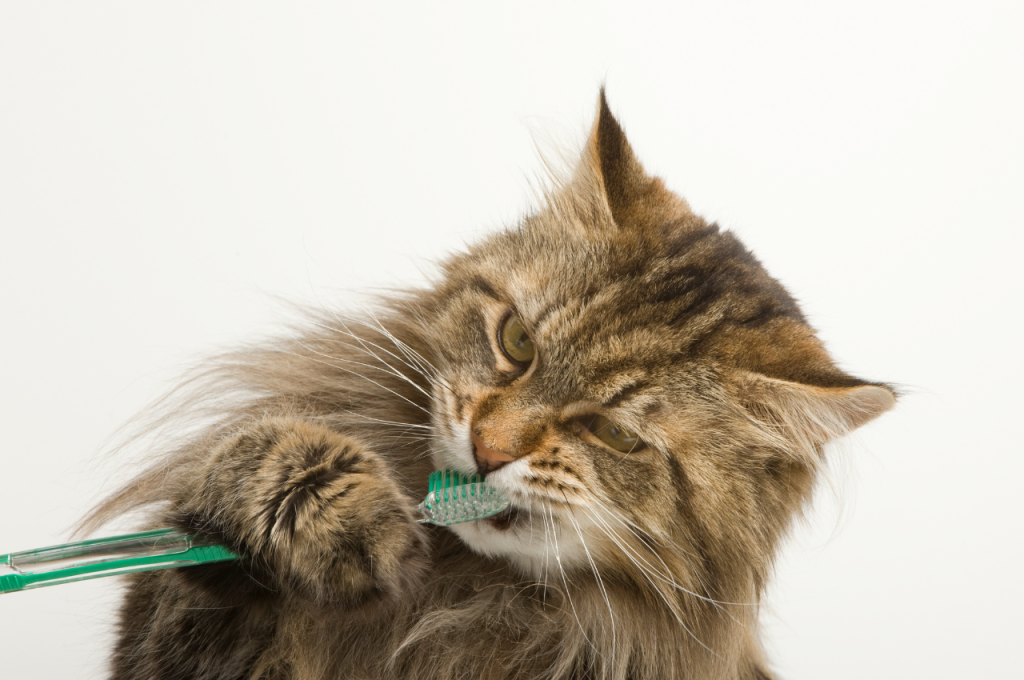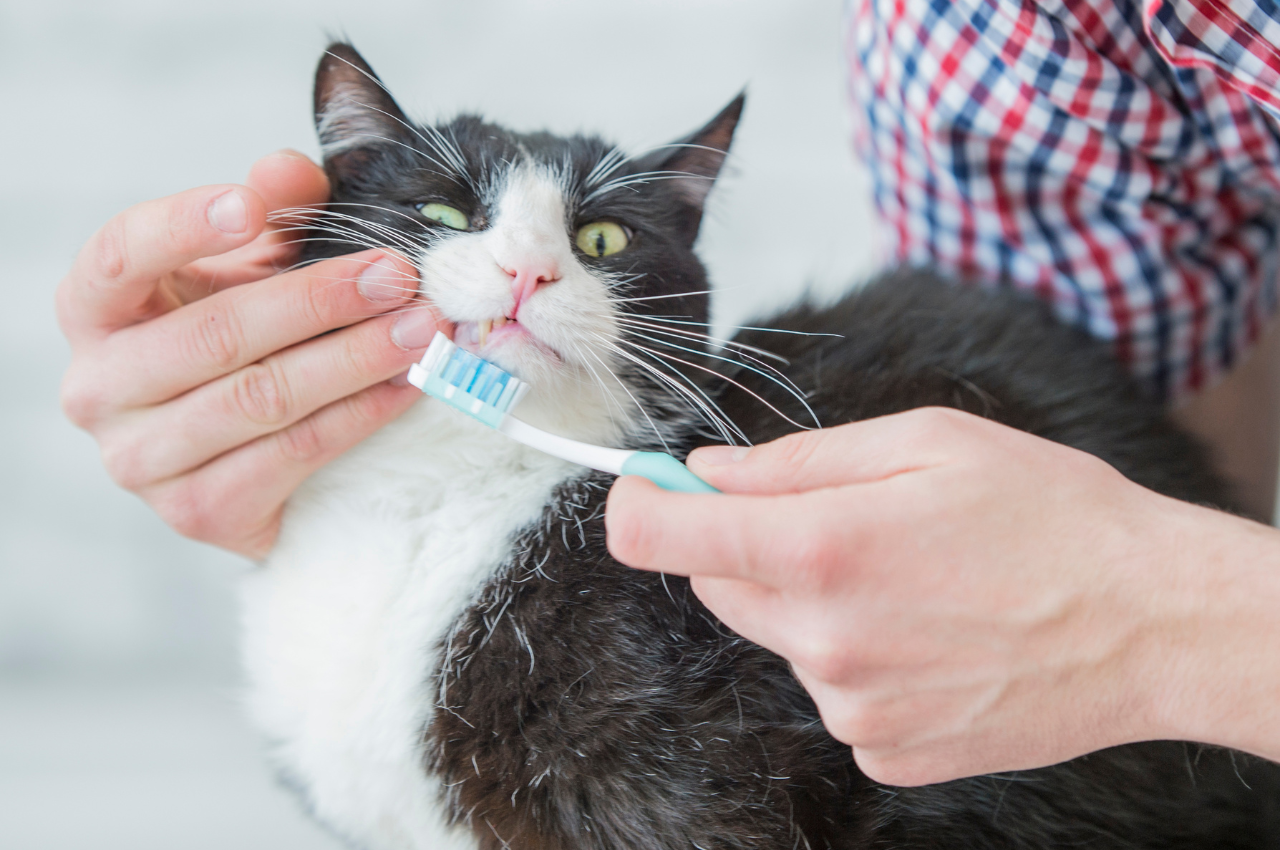To improve cat dental health, focus on regular brushing and providing dental-friendly treats. Neglecting dental care can lead to serious health issues in cats.
Dental diseases are common in cats, but with proper care, they can be prevented. Regular brushing helps remove plaque and tartar buildup, while dental treats can help clean teeth and freshen breath. It is important to introduce dental care gradually to cats and use specially formulated cat toothpaste. By implementing these practices, you can ensure better oral hygiene for your feline companion.
The Importance Of Cat Dental Health
Ensuring good dental health for your cat is crucial for their overall well-being. Just like humans, cats can suffer from dental issues that can cause pain, discomfort, and other health problems. Proper dental care can prevent these issues and contribute to your cat’s longevity and quality of life.

Signs Of Dental Problems
It’s important to be aware of the signs that may indicate dental problems in your cat. Bad breath, difficulty eating, and excessive drooling are common indicators that your cat may be experiencing dental issues. Gums that are red, swollen, or bleeding can also point to potential problems.
Consequences Of Neglect
Neglecting your cat’s dental health can lead to serious consequences. Tooth decay, gum disease, and oral infections can not only cause pain and discomfort but can also impact your cat’s overall health. Left untreated, dental issues can lead to loss of teeth and even affect vital organs such as the heart and kidneys.
Regular Dental Check-ups
Cats, like humans, require regular dental check-ups to maintain good oral health. These check-ups are essential for preventing dental issues and ensuring that any problems are caught early. By scheduling visits for your cat and understanding what happens during a check-up, you can play a crucial role in keeping your feline friend’s teeth and gums healthy.
Scheduling Visits
Regular dental check-ups for your cat should be scheduled at least once a year. However, some cats may require more frequent visits, especially if they are prone to dental problems. Your veterinarian can provide guidance on the appropriate frequency of dental check-ups based on your cat’s specific needs.
What Happens During A Check-up
During a dental check-up, the veterinarian will examine your cat’s mouth for any signs of dental issues such as plaque, tartar, or gum disease. They may also perform a thorough cleaning to remove any buildup and assess the overall health of your cat’s teeth and gums. In some cases, dental X-rays may be taken to identify any underlying issues that are not visible during the physical examination.
At-home Dental Care Basics
Discover essential at-home dental care basics to boost your cat’s dental health. Brushing regularly, providing dental treats, and scheduling vet check-ups are key for a healthy cat smile.
Choosing The Right Toothbrush
When it comes to maintaining your cat’s dental health, choosing the right toothbrush is crucial. Opt for a toothbrush specifically designed for cats. These toothbrushes usually have smaller heads and softer bristles, making them more comfortable for your feline friend. Additionally, you can consider using a finger brush, which fits over your finger and allows for easier brushing.
It’s important to note that you should never use a human toothbrush or toothpaste on your cat. Human toothbrushes are not designed for their delicate mouths, and toothpaste meant for humans can contain ingredients that are toxic to cats. Always stick to cat-specific dental products to ensure their safety and well-being.
The Art Of Brushing
Brushing your cat’s teeth may seem like a daunting task, but with some patience and practice, it can become a regular part of your pet care routine. Here are some tips to make the process easier:
- Start slow: Introduce your cat to the toothbrush gradually. Begin by letting them sniff and lick the toothbrush to get them comfortable with it.
- Use toothpaste for cats: Apply a small amount of cat toothpaste to the toothbrush. These toothpastes come in flavors that cats find appealing, such as chicken or fish.
- Gently brush: Hold the toothbrush at a 45-degree angle and brush your cat’s teeth using gentle, circular motions. Focus on the outer surfaces of the teeth, as that’s where plaque and tartar tend to accumulate.
- Be patient: If your cat resists at first, don’t force the issue. Gradually increase the brushing time over several sessions. Remember to praise and reward your cat with treats or affection to create positive associations with toothbrushing.
Brushing your cat’s teeth should ideally be done daily or at least a few times a week. Consistency is key to maintaining their dental health. However, even if you can only manage to brush once a week, it’s still better than not brushing at all.
Dental-friendly Diets
Cats, like humans, can suffer from dental issues such as plaque, tartar, and gingivitis. A dental-friendly diet is crucial for maintaining your feline friend’s oral health. By providing the right foods and avoiding harmful ones, you can significantly contribute to your cat’s dental well-being.
Foods To Include
- Raw Meat: A diet rich in raw meat can help clean your cat’s teeth and provide essential nutrients.
- Dry Kibble: Dry cat food can aid in reducing plaque and tartar buildup due to its crunchy texture.
- Dental Treats: Special dental treats designed to promote oral health can be beneficial additions to your cat’s diet.
- Raw Bones: Raw, meaty bones can help remove plaque and massage the gums, contributing to better dental hygiene.
Foods To Avoid
- Sugary Treats: Cats should avoid sugary treats, as sugar can contribute to tooth decay and other dental issues.
- Starchy Foods: Foods high in starch can lead to plaque formation and should be limited in your cat’s diet.
- Soft, Canned Food: While cats may enjoy canned food, it can stick to their teeth and promote plaque and tartar buildup.
Dental Treats And Toys
Cat dental health can be improved by incorporating dental treats and toys into their routine. These products can help remove plaque and tartar buildup, freshen breath, and promote healthy gums. Regular use can lead to better overall dental hygiene and prevent costly dental procedures in the future.

Dental Treats and Toys are a great way to improve your cat’s dental health. Not only do they help in keeping their teeth clean and healthy, but they also provide entertainment for your furry friend. In this section, we will discuss how these treats and toys can help and provide some of the best picks available.
How They Help
Dental treats and toys work by promoting chewing and biting, which helps in removing plaque and tartar buildup on your cat’s teeth. The abrasive texture of these treats and toys helps in scrubbing away the buildup, preventing dental issues such as bad breath, gum disease, and tooth decay. They also stimulate saliva production, which helps neutralize the harmful bacteria in your cat’s mouth.
Best Picks
Here are some of the best dental treats and toys available for your feline friend:
| Treat/Toy | Description |
| Greenies Dental Treats | These treats are made with natural ingredients and come in a variety of flavors. They are great for promoting healthy teeth and fresh breath. |
| KONG Cat Toy | This toy is made of durable rubber and can be filled with treats. It promotes chewing and biting, helping to keep your cat’s teeth clean. |
| Dental Chew Toys | These toys are designed to promote chewing and help remove plaque and tartar buildup. They come in a variety of shapes and sizes and are great for keeping your cat’s teeth healthy. |
In conclusion, incorporating dental treats and toys into your cat’s routine can greatly benefit their dental health. These treats and toys help in removing plaque and tartar buildup, preventing dental issues, and providing entertainment for your furry friend. Be sure to choose the best picks that suit your cat’s needs and preferences.
Professional Dental Cleaning
Improve your cat’s dental health with professional dental cleaning. Regular cleanings can prevent plaque buildup and maintain your cat’s oral hygiene. Enhance your feline friend’s overall health with proper dental care.
When It’s Needed
Regular check-ups determine if professional cleaning is necessary.
What To Expect
The vet will examine teeth and gums, removing tartar and plaque.
Signs It’s Time For A Vet Visit
Recognizing the signs that indicate your cat needs dental care is crucial for maintaining their overall health and well-being.
Red Flags
- Bad breath that persists despite brushing.
- Difficulty eating or dropping food from the mouth.
- Excessive drooling or pawing at the mouth.
Emergency Situations
- Bleeding from the mouth.
- Loose or broken teeth.
- Sudden refusal to eat or drink.
Preventing Dental Diseases
Cats are prone to dental diseases, which can lead to pain and discomfort. Preventing these issues is crucial for your cat’s overall health and well-being.

Early Interventions
Regular teeth brushing can help prevent plaque buildup.
- Start introducing dental care habits to your cat early.
- Use toothpaste and brushes specifically designed for cats.
- Consult your vet for guidance on proper techniques.
Long-term Strategies
Provide quality diet and dental treats to promote oral health.
- Offer chew toys designed to clean teeth and massage gums.
- Regular dental check-ups are essential for early disease detection.
- Monitor eating habits and look for signs of discomfort while eating.
Conclusion
Taking care of your cat’s dental health is crucial to their overall well-being. By following the tips mentioned such as regular brushing, providing dental-friendly treats, and scheduling routine check-ups with your veterinarian, you can help prevent dental problems and ensure a happy, healthy cat.
Remember to also stay aware of any changes in your cat’s behavior or dental health and seek professional help if needed. With a little effort and care, you can keep your cat’s teeth and gums in top shape for years to come.
